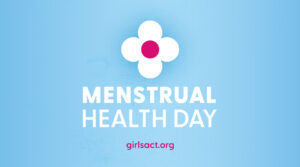More than 10 million people contracted tuberculosis during 2021 and 1.6 million died from this cause, according to the most recent report on the world situation of this disease, published by the World Health Organization (WHO).
According to the agency, it is the first time in many years that the number of people who contract the disease and who are also infected by treatment-resistant organisms has increased. This is because, in addition to the 4.5% increase in cases compared to 2020, treatment-resistant tuberculosis increased 3% between 2020 and 2021, with more than 450,000 cases of drug-resistant bacteria.
A highly lethal infection
Tuberculosis is a disease caused by the bacterium Mycobacterium tuberculosis, and is the second deadliest infection after SARS-CoV-2, the virus that causes COVID-19.
It mainly affects the lungs, although it can also develop in other organs, and is transmitted when infected people expel bacteria into the air, for example, when they cough.
According to the WHO, the five main risk factors for tuberculosis are:
- The malnutrition
- HIV infection
- Problems with alcohol consumption
- Smoking
- Diabetes
It is a disease that can be cured, and about 85% of people who contract it are free of it after a treatment of 4 to 6 months. However, economic problems make it difficult for people to receive the proper diagnosis and treatment, since the coverage of health services still does not reach the entire population.
The director of the WHO Global Program on Tuberculosis, Tereza Kasaeva, stated that the report provides new and important data and shows the need to “urgently redouble efforts to reactivate the response to tuberculosis”, as this is the only way to that the goals can be achieved and, above all, save lives.
Detection and care, affected by the pandemic
In 2019, new reported cases totaled 7.1 million, but this figure decreased to 5.8 million in 2020, due to the COVID-19 health emergency that limited access to health services for other diseases.
In 2021, 6.4 million new cases were registered, indicating that pre-pandemic detection levels have not yet been reached. This would seem to indicate that there are more undetected cases and therefore they do not receive treatment, which would increase the number of deaths and the transmission of the infection.
The number of people receiving treatment also fell between 2019 and 2020, and in 2021 only 161,746 people started treatment, that is, only one in three who needed it.
To this must be added that global spending on medical services against this disease fell from 6 billion dollars in 2019 to 5.4 billion dollars in 2020; both figures are well below the global goal of investing 13 billion dollars in 2022.
Pending goals
In 2014 and 2015, respectively, the Member States of the WHO and the United Nations committed to the United Nations Sustainable Development Goals and the WHO End TB Strategy. These are agreements that include intermediate goals to reduce the incidence of tuberculosis, deaths due to it and the economic costs that people affected by the disease must bear.
In 2018, targets were set to treat an additional 40 million people with tuberculosis and provide preventive treatment to at least 30 million people who are at risk of contracting the disease, to be met by 2022.
At AHF Latin America and the Caribbean we know that tuberculosis is one of the infections that most affects people living with HIV, which is why we work every day so that they receive the health care services they need. If you want to take a free HIV screening test, come to our offices in your country or write to us on Whatsapp and make your appointment today.






